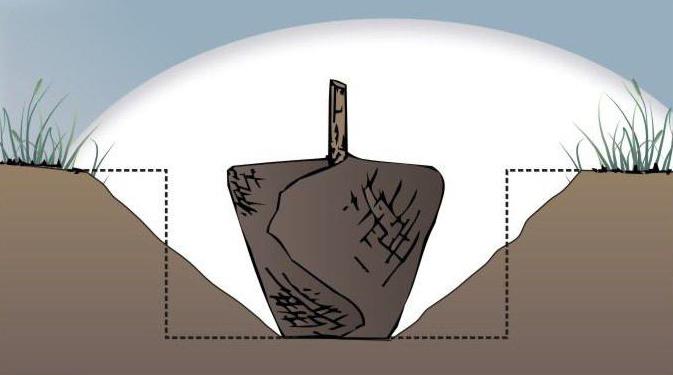One of the most beautiful representatives of the Cypress family is the thuja globose. She is a favorite plant of landscape designers, and there are several reasons for this. The perennial shrub, introduced into the landscape gardening culture since 1874, retains its decorative appearance throughout the year, it is relatively unpretentious and copes with urban gas pollution, is frost-resistant and lends itself to crown formation. It should also be noted for its versatility in terms of use. The original shrub will be equally good in solitary planting, a Japanese garden, on an alpine hill, etc.
Thuja Globosa: description
The plant is an evergreen shrub of spherical shape. In height and width reaches a maximum of two meters by 20-25 years of age. The growth rate is very low: only 5 cm per year. Scaly needles change color during the year - from light green in spring to gray-green or with a brown tint in winter. The crown is dense, shoots are flat and grow upward, crossing. With age, the thuja becomes loose, partially losing its decorative effect. In this regard, once every 2-3 years it is necessary to conduct a rejuvenating haircut. Globose is a thuja long-lived. The age of the oldest specimens reaches 200 years. Fruits - small brown cones up to 0.7-1 cm in length.
Choosing a place and soil
Globose is characterized as a shade-tolerant plant, but partial shade is most favorable for its growth. In the sunshine quite often suffers from heat and overheating, temperature drops during the day. Choose a shady place for the plant, protected from winds and drafts. Thuja Globosa is undemanding to the composition of the soil, can adapt to conditions. However, it grows best on moist, fertile (but without swamping) soil, loam. It is frost-resistant, therefore it is well suited for central Russia. Due to its small size, as a rule, in winter it is completely under snow cover. Spring does not burn.
Thuja Globosa: planting and care
Experts recommend buying plants in nurseries and specialized stores in a container, that is, with a closed root system. Such specimens take root much better and adapt to new conditions faster. Before removing the shrub, carefully spill the earthen lump, leave for a while and prepare the landing pit. Its size depends on the root system. If the groundwater is close to the bottom, pour a layer of expanded clay, crushed stone 10–20 cm thick. Prepare the soil mixture from sand, peat and sod land in a ratio of 1: 1: 2 and 0.5 kg of nitroammophos. Shrub prefers a slightly acidic reaction of the medium in the range of 4.5-6. Globose is a thuja with a superficial root system, therefore, when loosening the soil, you need to be extremely careful: it is best to mulch the peri-stem circle with wood chips or peat 7 cm. Do not forget to remove it before winter and replace it with coniferous spruce branches, otherwise there is a risk that the mouse.

Watering in the first month after planting is recommended regular - 2-3 times a week, and adult plants (in hot and dry weather) - 1.5-2 buckets with a similar interval. A sufficient amount of moisture, obtained from the roots and through the shoots, is what Globosa needs. Thuja is responsive to spraying (sprinkling). Spend it in the early morning hours or in the evening, when the sun no longer falls on the branches. If the shoots remain moist at night, the likelihood of bacterial and fungal diseases increases.
Diseases and Pests
The shrub is quite resistant to various fungi, bacteria and insects. The immunity of the plant is weakened if it is improperly looked after, therefore, first of all, look for the causes of diseases in the errors of care. Thuja is subject to:
- late blight, which manifests itself as withering shoots, softening the tissue at the base of the trunk and the appearance of a rot odor;
- browning of shoots caused by fungi; initially appears on separate scales, and then whole branches die;
- a false shield, the first sign of the appearance of which are yellow sores on the cortex, gradually increasing in size;
- rust and shute - fungal diseases manifested by darkening and subsequent decay of needles.
For the treatment and prevention of the disease, use special fungicidal and insecticidal drugs.
Using thuja in design
Western thuja Globosa is a valuable ornamental shrub. In European gardens and parks it is actively used to create low green hedges, in a single planting, in rock gardens. But the bush looks especially original in large group compositions built on the contrast of deciduous and evergreen species, pyramidal and spherical, monochrome-green and variegated. In addition, Globosa is a thuja, perfectly suitable for growing as a pot culture on the terrace, balcony, loggia, at the entrance to the building and even on the roof.